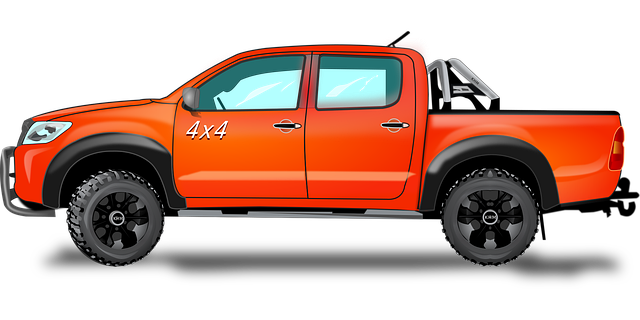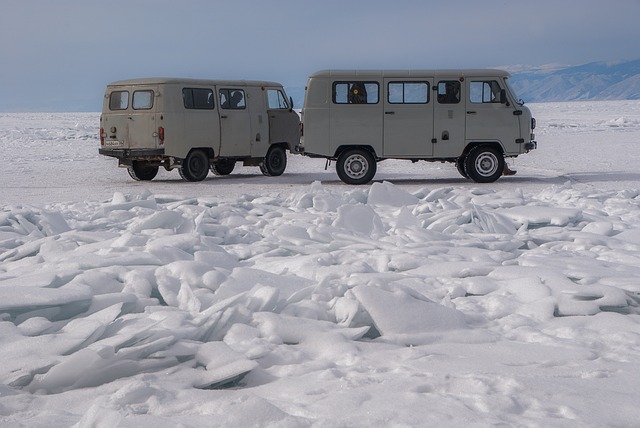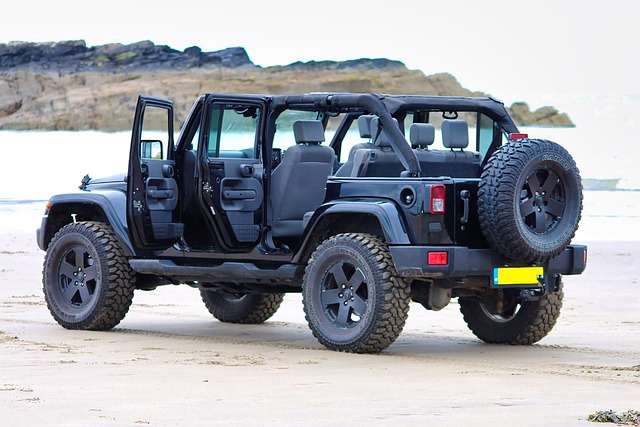Recovery Lines: Essential Tools for Off-Road Adventures
Recovery lines, offered by Overland 4×4-Store RGV, are crucial for off-road safety and success. They assist in freeing stuck vehicles from challenging terrains like mud, sand, or rough ground. With high-strength steel or synthetic fiber options, equipped winches, and hooks, these lines cater to various needs. Regular maintenance and the right selection (based on vehicle type, terrain, and line length/strength) ensure reliable towing during emergencies, providing peace of mind for adventurers exploring rugged landscapes.
Mastering Recovery Lines for Off-Road Adventures
Recovery lines are essential tools for overlanders, offering a safety net during challenging terrain. This comprehensive guide explores the world of recovery lines, empowering 4×4 enthusiasts to navigate obstacles with confidence. From understanding the fundamentals and choosing the right gear to installation, usage, and maintenance, we cover it all. Discover how to select from wire, synthetic, and specialized options at Overland 4×4-Store-RGV, your trusted partner for top-quality recovery solutions tailored to enhance your off-road experiences.
- <a href="#understanding-recovery-lines–the-basics“>Understanding Recovery Lines: The Basics
- – Definition and purpose of recovery lines in off-road adventures
- – Key components and materials used for effective recovery
- <a href="#choosing-the-right-recovery-line-for-your-overland-4×4“>Choosing the Right Recovery Line for Your Overland 4×4
- – Factors to consider when selecting a recovery line (length, strength, compatibility)
- – Types of recovery lines: wire, synthetic, and specialized options
<section id="understanding-recovery-lines–the-basics“>
Understanding Recovery Lines: The Basics

Recovery lines, also known as tow ropes or recovery straps, are essential tools for off-road enthusiasts and outdoor adventurers. These robust cables are designed to assist in extricating vehicles from challenging terrains, such as mud, sand, or rugged terrain where traditional wheels might not provide sufficient traction. Whether you’re an experienced overlander or just starting your 4×4 adventures, having well-maintained recovery lines on hand is crucial for safety and peace of mind.
At the Overland 4×4-Store RGV, we understand that every adventure is unique, so we offer a variety of recovery lines suited for different needs. These lines are typically made from high-strength materials like steel or synthetic fibers, ensuring they can withstand extreme stress without snapping. Properly equipped with winches and hooks, these recovery tools allow for controlled and safe vehicle extraction, making them indispensable for any serious off-roader.
– Definition and purpose of recovery lines in off-road adventures

In the thrilling realm of off-road adventures, recovery lines play a pivotal role in ensuring safe and successful navigation through challenging terrains. These specialized ropes are designed to assist 4×4 enthusiasts and overland travelers by providing a secure means to extract their vehicles from difficult situations, such as deep mud, sand, or rocky inclines. The primary purpose of recovery lines is to offer a reliable backup when conventional methods fail, enabling drivers to overcome obstacles without needing professional towing services.
The overland 4×4-store-rgv, a hub for off-road gear enthusiasts, offers an extensive range of recovery lines crafted from high-tensile strength materials, ensuring durability and safety. These lines are typically equipped with various attachment points and hardware, allowing users to secure their vehicles effectively during extraction. By having these essential tools on hand, adventurers can tackle remote landscapes with confidence, knowing they have a reliable solution for unexpected vehicle recoveries.
– Key components and materials used for effective recovery

Effective recovery lines rely on several key components and materials to ensure successful extrication, especially in challenging off-road situations. One of the most crucial elements is a robust and reliable towing system. This includes heavy-duty winches with sufficient pulling power, rated for the vehicle’s weight and expected load. The use of high-quality, durable ropes or cables is essential; they should be capable of withstand significant strain without failing, often made from materials like dyneema or steel. Additionally, overland 4×4 stores in RGV (Rihand Valley) offer specialized recovery gear such as beam splitters and wedges that help stabilize vehicles during recovery operations.
The choice of materials for these components is vital to their performance. For instance, all-terrain vehicles (ATVs) or four-wheelers require a different approach than heavy trucks due to varying weight distribution and terrain encounters. Lightweight, yet strong materials like carbon fiber or specialized alloys can significantly improve the efficiency of recovery lines while reducing overall equipment weight. Furthermore, proper maintenance and regular inspection of these components are indispensable to ensure their reliability during critical operations.
<section id="choosing-the-right-recovery-line-for-your-overland-4×4“>
Choosing the Right Recovery Line for Your Overland 4×4

When equipping your overland 4×4, selecting the appropriate recovery line is crucial for ensuring safe and effective towing during challenging off-road situations. The right recovery line should be durable, sturdy, and designed to handle the specific demands of your vehicle and the terrains you’ll encounter. At the Overland 4×4-Store RGV, we offer a diverse range of recovery lines tailored to cater to various needs.
Consider factors like wire or cable construction, rating capacity, length, and attachment options when making your choice. For instance, high-quality steel cables provide exceptional strength and resistance to stretching, ideal for heavy-duty towing. Alternatively, synthetic ropes might be lighter and more flexible, suitable for lighter vehicles and specific recovery scenarios. Our store’s experts can guide you in selecting the perfect recovery line that aligns with your overland 4×4’s capabilities and the diverse landscapes you plan to conquer.
– Factors to consider when selecting a recovery line (length, strength, compatibility)

When choosing a recovery line for your overland 4×4 adventures, several crucial factors come into play to ensure its effectiveness and safety. The length of the line is a primary consideration; longer lines offer more reach for pulling or winching, especially in challenging terrain, but they also require adequate storage space on your vehicle. Strength is another vital aspect; the line must withstand significant tension without compromising integrity, matching the power of your 4×4 and any attached equipment. Compatibility with your vehicle’s system is equally important; ensuring that the recovery line fits seamlessly with your vehicle’s existing hardware and winching capabilities guarantees a secure connection during emergencies.
Additionally, materials used in manufacturing play a significant role in determining the line’s durability and performance. At the Overland 4×4-Store-RGV, we recommend selecting lines made from high-quality materials like durable synthetic fibers or steel cables, known for their resistance to abrasion and corrosion. These factors collectively contribute to a successful recovery operation, giving you peace of mind while exploring rugged landscapes.
– Types of recovery lines: wire, synthetic, and specialized options

Recovery lines are essential tools for off-road enthusiasts and overland travelers, offering a safety net during unexpected situations. At Overland 4×4-Store RGV, we offer a diverse range of recovery equipment to cater to various needs. When it comes to recovery lines, three primary types are available: wire, synthetic, and specialized options, each with unique advantages.
Wire recovery lines, often made from steel or stainless steel, are renowned for their strength and durability. They are ideal for heavy-duty towing and pulling tasks, capable of handling significant weight. These lines are versatile and can be used in a variety of conditions, making them a popular choice among experienced off-roaders. Synthetic recovery ropes, on the other hand, provide excellent resistance to abrasion and are lighter in weight, allowing for easier handling. They are perfect for those seeking a more portable option without compromising strength. Specialized recovery lines cater to specific requirements, such as high-visibility options for improved visibility during night operations or heat-resistant lines designed for extreme temperatures.
In summary, equipping your overland 4×4 with the right recovery line is a crucial step for any off-road enthusiast. By understanding the basics of recovery lines and considering factors like length, strength, and compatibility, you can select an ideal solution from the diverse range available at the Overland 4×4-Store RGV. With these considerations in mind, you’ll be better prepared to handle unexpected challenges on your next adventure, ensuring a safer and more enjoyable experience.



